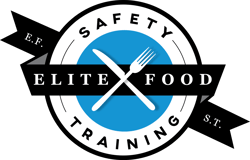In an ever-evolving world, maintaining a structured food safety program is not just a regulatory requirement but a cornerstone of organizational success.
Why Structured Food Safety Programs are Crucial in Today's Environment
In today's rapidly evolving world, the importance of structured food safety programs cannot be overstated. With increasing globalization and diverse food supply chains, the risk of contamination and foodborne illnesses is ever-present. A structured food safety program ensures that organizations adhere to stringent safety standards, thereby protecting the health and well-being of their patrons.
Moreover, the reputation of an organization hinges on its commitment to food safety. A single incident of foodborne illness can lead to significant financial losses, legal liabilities, and damage to the organization's reputation. By implementing a structured food safety program, organizations can establish themselves as trustworthy entities that prioritize the health of their consumers.
Key Components of an Effective Food Safety Program
An effective food safety program is built on several key components. First and foremost is the establishment of clear policies and procedures that align with regulatory guidelines. These policies should cover every aspect of food handling, from procurement to preparation and storage.
Training and education are also critical. Staff should be well-informed about the latest food safety practices and regularly updated on any changes in regulations. Regular audits and inspections ensure that these practices are being followed consistently. Additionally, having a robust monitoring and documentation system helps in tracking compliance and identifying areas for improvement.
How Food Safety Programs Benefit Educational Institutions
For educational institutions, maintaining a structured food safety program is particularly vital. Schools and universities serve a large population of young individuals who are more susceptible to foodborne illnesses. A well-implemented food safety program ensures that the meals served meet the highest safety standards, thereby safeguarding the health of students and staff.
Furthermore, a commitment to food safety can enhance the institution's reputation, attracting more students and staff. It also minimizes the risk of potential legal issues arising from foodborne illnesses, thereby protecting the institution's financial health.
Common Challenges and How to Overcome Them
Implementing a food safety program comes with its set of challenges. One of the most common challenges is ensuring consistent compliance across all levels of the organization. This can be addressed by regular training sessions and audits to reinforce the importance of food safety practices.
Another challenge is keeping up with the ever-changing regulations and standards. Organizations can overcome this by subscribing to industry updates and participating in food safety seminars and workshops. Additionally, leveraging technology for monitoring and documentation can streamline processes and ensure that nothing falls through the cracks.
Implementing a Food Safety Program: Best Practices
To successfully implement a food safety program, organizations should start with a comprehensive assessment of their current food safety practices. This includes identifying potential hazards and areas for improvement. Involve all stakeholders in the planning process to ensure buy-in and commitment.
Regular training and education are essential to keep everyone informed about the latest food safety practices. Incorporating technology, such as digital monitoring systems, can enhance accuracy and efficiency. Finally, continuous improvement should be a core principle, with regular reviews and updates to the program to adapt to new challenges and regulations.

.png)
.png)
-2.png)
-2.png)
.jpg)
